 One of the important festivals of Monsoon season in India is Rathayatra, the chariot festival. The last Friday, that is 4th July this year, was the day for the festival. Although the rituals are observed for the seven consecutive days the first day celebration is the most cheerful and pompous one.
One of the important festivals of Monsoon season in India is Rathayatra, the chariot festival. The last Friday, that is 4th July this year, was the day for the festival. Although the rituals are observed for the seven consecutive days the first day celebration is the most cheerful and pompous one.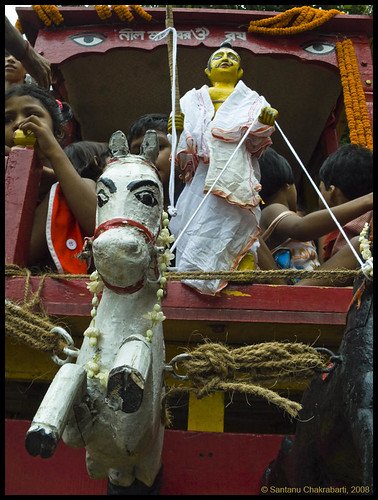
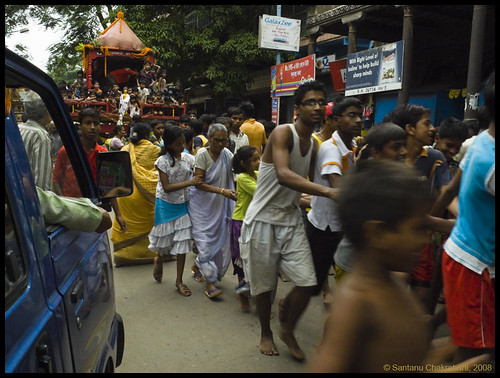
 The original seat of the festival is at Puri in the state of Orissa though these days, due to Indian diaspora, it seems one can witness the festival in the most unexpected location of the world. In India, other than Puri, there are some places which are renowned for the festival. For example in Bengal the chariot festival in Mahesh is considered to second that of Puri in spirituality.
The original seat of the festival is at Puri in the state of Orissa though these days, due to Indian diaspora, it seems one can witness the festival in the most unexpected location of the world. In India, other than Puri, there are some places which are renowned for the festival. For example in Bengal the chariot festival in Mahesh is considered to second that of Puri in spirituality.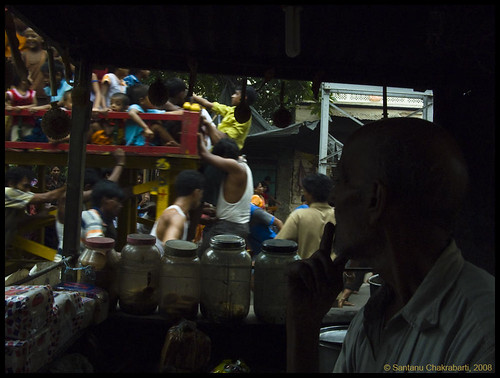
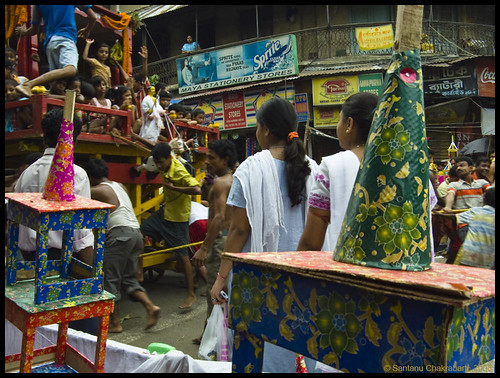
In India to drag the chariot for someone is considered an act of showing the highest honour
 to the person. When Swami Vivekananda returned after propagating the message of Hinduism at the World Parliament of Religion in USA, the students at Kolkata dragged his horse cart to show their heartfelt respect. The main activity in the festival of Rathayatra is also to drag the chariot of the Gods Sri Jagannatha, Sri Balarama and Devi Subhadra by the devotees. Sri Jagannatha is considered to be the God of all gods and the protector of the whole world. It is believed that on this occasion Sri Jagannatha comes down from his divine abode to meet his devotees on the Earth.
to the person. When Swami Vivekananda returned after propagating the message of Hinduism at the World Parliament of Religion in USA, the students at Kolkata dragged his horse cart to show their heartfelt respect. The main activity in the festival of Rathayatra is also to drag the chariot of the Gods Sri Jagannatha, Sri Balarama and Devi Subhadra by the devotees. Sri Jagannatha is considered to be the God of all gods and the protector of the whole world. It is believed that on this occasion Sri Jagannatha comes down from his divine abode to meet his devotees on the Earth.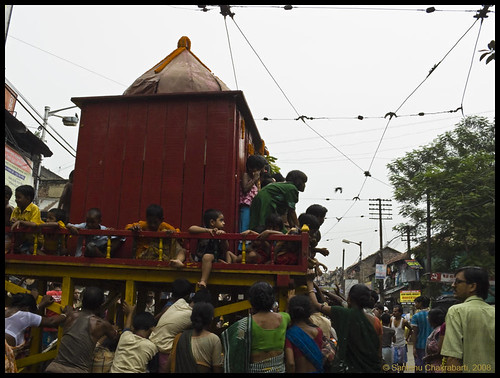

Each neighbourhood in Kolkata has its temple of Sri Jagannatha and the community brings out a chariot which they drag through the streets of the locality. People from the nearby houses come
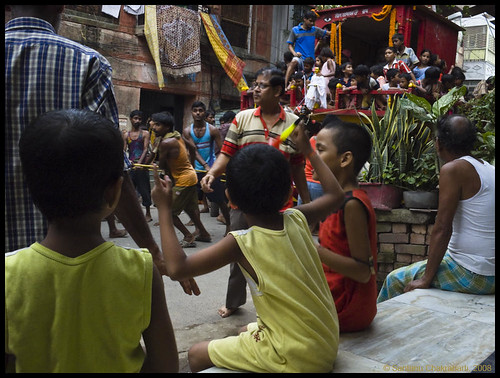 out on the street as the chariot reaches their place to show tribute to the God and to offer sweets and fruits to please Him. Some old families in Kolkata also bring out their family chariots to the street. Recently ISKCON is also celebrating the day in Kolkata and it is one of the most colourful and the biggest events here. However it is the children who seem to enjoy most on this occasion. They buy small wooden chariots from the shops, decorate it with flowers and leaves, place small idols of the gods inside it and then drag it through the streets with blowing of palm leaf horns. At the dusk people get back home buying some bengali snacks like papad, jeelabi, etc.
out on the street as the chariot reaches their place to show tribute to the God and to offer sweets and fruits to please Him. Some old families in Kolkata also bring out their family chariots to the street. Recently ISKCON is also celebrating the day in Kolkata and it is one of the most colourful and the biggest events here. However it is the children who seem to enjoy most on this occasion. They buy small wooden chariots from the shops, decorate it with flowers and leaves, place small idols of the gods inside it and then drag it through the streets with blowing of palm leaf horns. At the dusk people get back home buying some bengali snacks like papad, jeelabi, etc.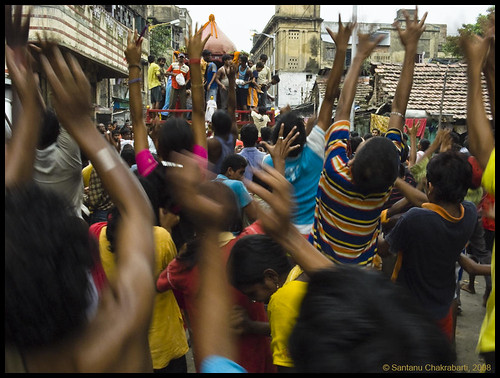
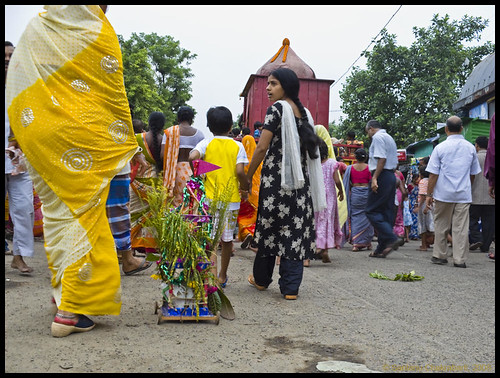
The God is said to be taken to His aunt's house on the chariot as the part of the first day celebration and after the seven days of observing the rituals on the last day the God is again taken back to His place on the same chariot.





No comments:
Post a Comment